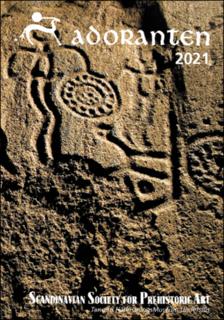| dc.contributor.author | Henriksen, Merete Moe | |
| dc.date.accessioned | 2023-03-10T10:10:23Z | |
| dc.date.available | 2023-03-10T10:10:23Z | |
| dc.date.created | 2022-09-28T19:29:05Z | |
| dc.date.issued | 2022 | |
| dc.identifier.citation | Adoranten. 2022, 52 (2021), 41-59. | |
| dc.identifier.issn | 0349-8808 | |
| dc.identifier.uri | https://hdl.handle.net/11250/3057640 | |
| dc.description.abstract | This article explores how the practice of including rock art in burials from the Bronze Age in Scandinavia was influenced by and incorporated into the new ideas and practices brought about by the introduction of cremation. Three portable stones with rock art found on the exterior of a cairn at the Late Bronze Age site of Sandbrauta in Central Norway are the point of departure for the discussion. Clay from a Late Bronze Age landslide that occurred soon after the the ritual activity had sealed off the site thus revealing the stones with the petroglyphs to be part of the ritual context. It is argued that the stones with rock art displaying different stages of decoration reflect stages in the stones` biography as well as stages in the process of bodily transformation, thus rendering the cairn to be a place for integrated rites involving both the transformation of bodies and rock art. | |
| dc.language.iso | eng | |
| dc.title | Transforming bodies and rock art. Late Bronze Age mortuary rituals at Sandbrauta. | |
| dc.title.alternative | Transforming bodies and rock art. Late Bronze Age mortuary rituals at Sandbrauta. | |
| dc.type | Peer reviewed | |
| dc.type | Journal article | |
| dc.description.version | publishedVersion | |
| dc.source.pagenumber | 41-59 | |
| dc.source.volume | 52 | |
| dc.source.journal | Adoranten | |
| dc.source.issue | 2021 | |
| dc.identifier.cristin | 2056598 | |
| cristin.ispublished | true | |
| cristin.fulltext | original | |
| cristin.qualitycode | 1 | |
